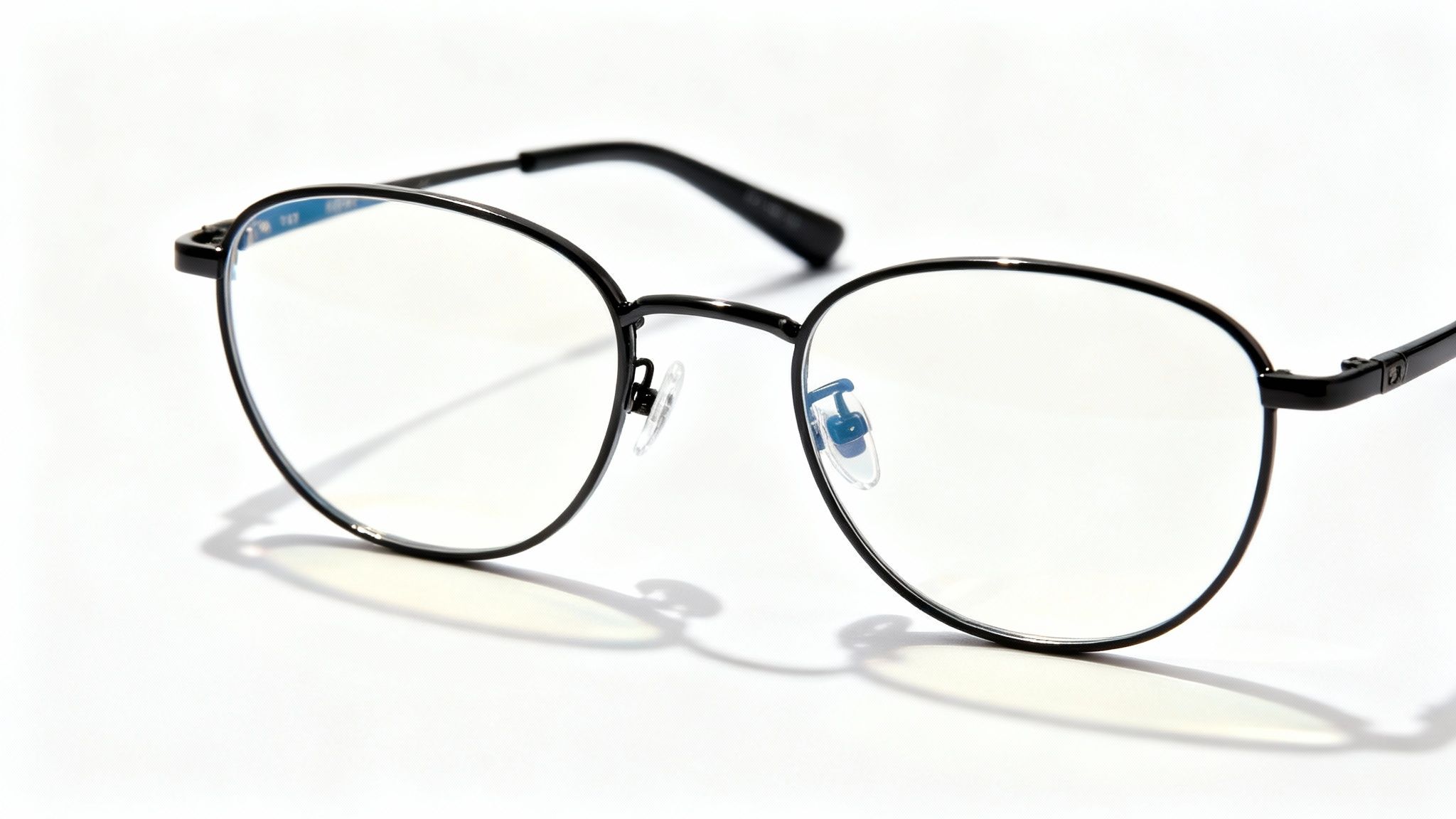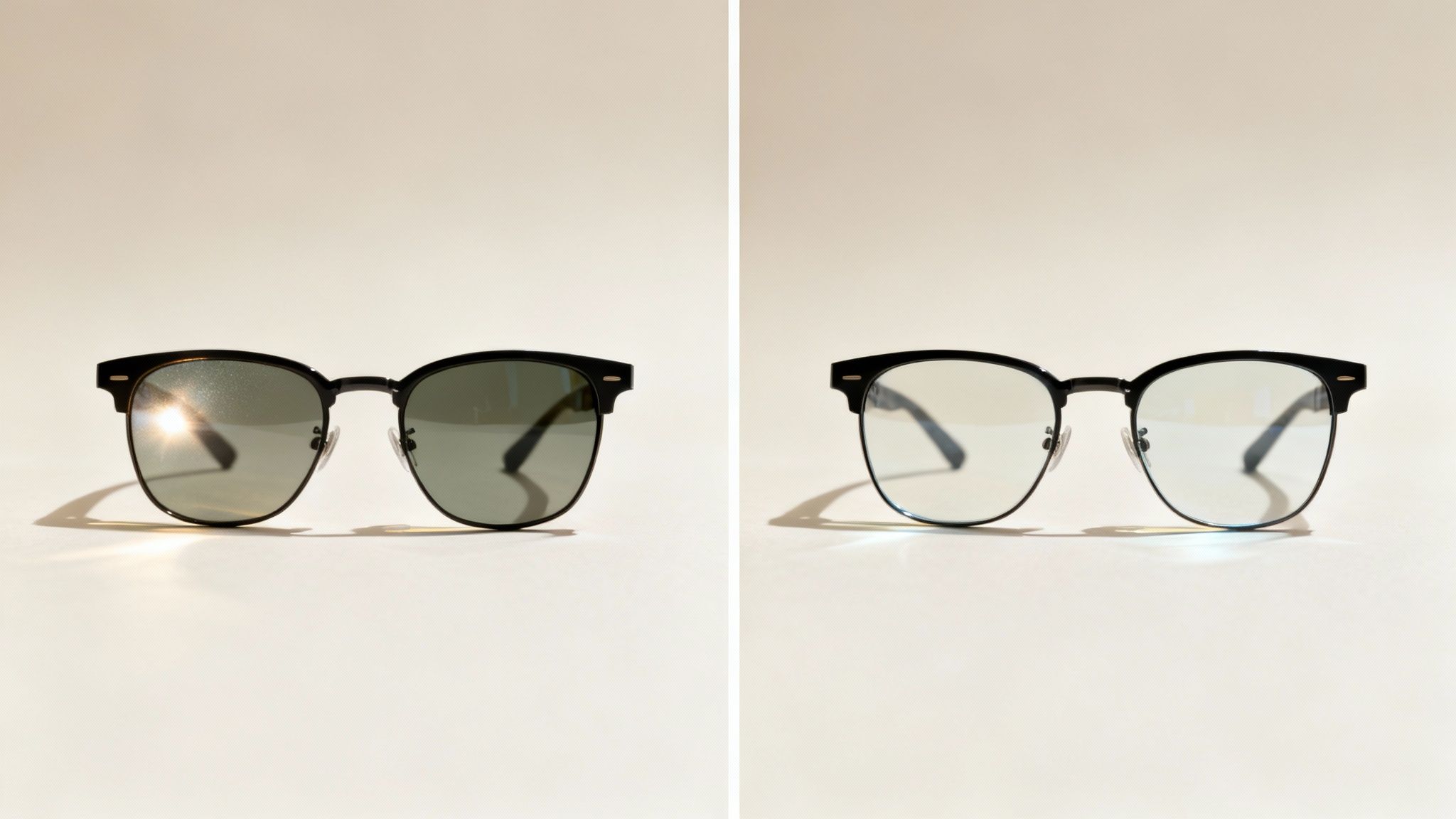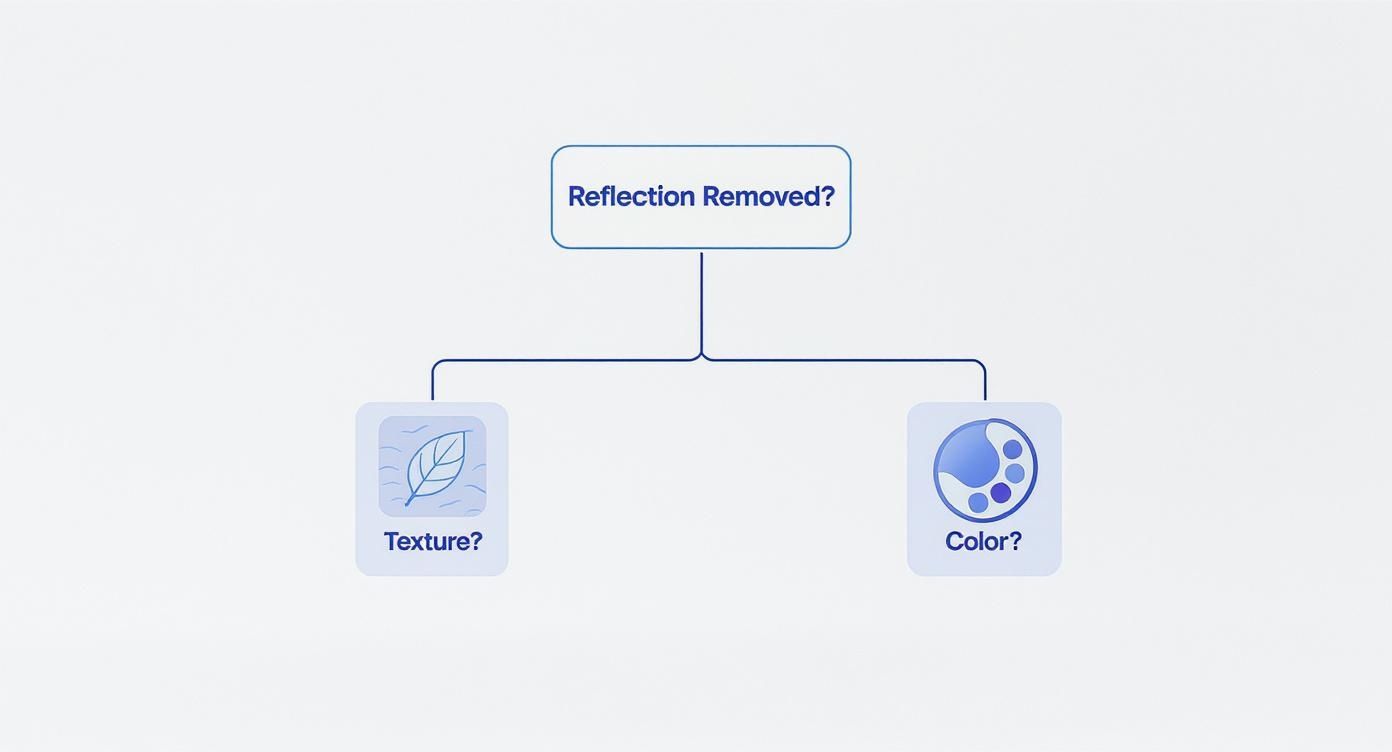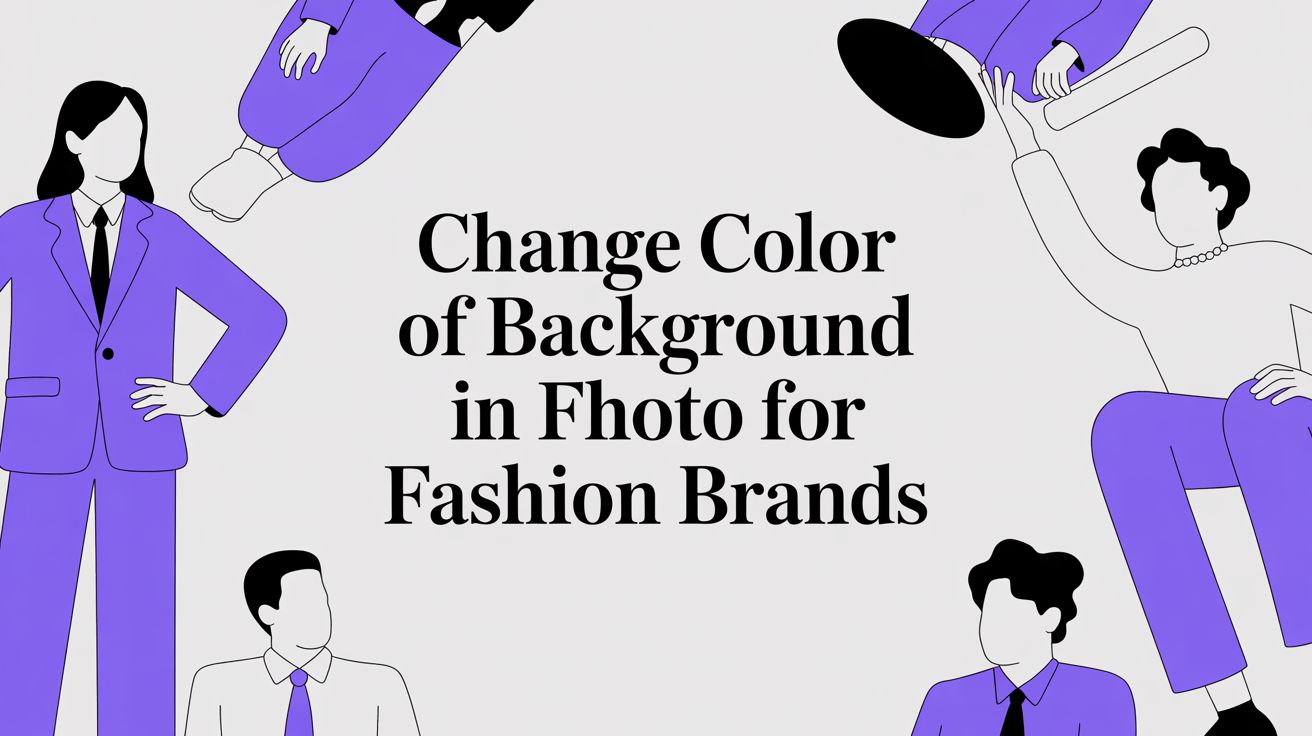How to Remove Reflections in Photoshop — Without Wasting Hours
Learn how to remove reflections in Photoshop with AI and manual techniques. Get crisp, professional product photos for your e-commerce brand.
How to start saving money
Lorem ipsum dolor sit amet, consectetur adipiscing elit lobortis arcu enim urna adipiscing praesent velit viverra sit semper lorem eu cursus vel hendrerit elementum morbi curabitur etiam nibh justo, lorem aliquet donec sed sit mi dignissim at ante massa mattis.
- Neque sodales ut etiam sit amet nisl purus non tellus orci ac auctor
- Adipiscing elit ut aliquam purus sit amet viverra suspendisse potent i
- Mauris commodo quis imperdiet massa tincidunt nunc pulvinar
- Adipiscing elit ut aliquam purus sit amet viverra suspendisse potenti
Why it is important to start saving
Vitae congue eu consequat ac felis placerat vestibulum lectus mauris ultrices cursus sit amet dictum sit amet justo donec enim diam porttitor lacus luctus accumsan tortor posuere praesent tristique magna sit amet purus gravida quis blandit turpis.

How much money should I save?
At risus viverra adipiscing at in tellus integer feugiat nisl pretium fusce id velit ut tortor sagittis orci a scelerisque purus semper eget at lectus urna duis convallis. porta nibh venenatis cras sed felis eget neque laoreet suspendisse interdum consectetur libero id faucibus nisl donec pretium vulputate sapien nec sagittis aliquam nunc lobortis mattis aliquam faucibus purus in.
- Neque sodales ut etiam sit amet nisl purus non tellus orci ac auctor dolor sit amet
- Adipiscing elit ut aliquam purus sit amet viverra suspendisse potenti
- Mauris commodo quis imperdiet massa tincidunt nunc pulvinar
- Adipiscing elit ut aliquam purus sit amet viverra suspendisse potenti
What percentage of my income should go to savings?
Nisi quis eleifend quam adipiscing vitae aliquet bibendum enim facilisis gravida neque. Velit euismod in pellentesque massa placerat volutpat lacus laoreet non curabitur gravida odio aenean sed adipiscing diam donec adipiscing tristique risus. amet est placerat imperdiet sed euismod nisi.
“Nisi quis eleifend quam adipiscing vitae aliquet bibendum enim facilisis gravida neque velit euismod in pellentesque massa placerat”
Do you have any comments? Share them with us on social media
Urna ut fermentum imperdiet lacus, elementum etiam maecenas libero nunc, suspendisse massa, nisl, elit curabitur feugiat in quis ut nibh enim in tristique aliquam sed vitae dui, dis adipiscing pharetra aliquam turpis turpis nibh rhoncus enim, pellentesque leo laoreet neque in sed bibendum fermentum suspendisse tempus non purus adipiscing suscipit fringilla adipiscing convallis dolor nulla fermentum facilisis ullamcorper ut vehicula tortor libero metus donec velit, tristique fermentum, dictum euismod diam scelerisque enim non pharetra tristique lectus habitant pharetra est id
When fashion brands like Zara or ASOS shoot new collections, a single distracting reflection can derail the customer experience. Knowing how to remove reflections in Photoshop creates the clean, professional look that holds a shopper's attention and drives sales.
How Flawless Photos Cut Content Costs and Boost Conversions

In fashion eCommerce, every pixel counts. A stray camera flash on sunglasses or a window reflected in a belt buckle instantly shatters the illusion of luxury.
These imperfections are jarring — they pull a potential customer out of the buying journey.
High-quality, distraction-free images aren't just a "nice-to-have." They are a core business driver. Polished visuals build brand credibility and directly influence purchasing decisions.
In fact, campaigns with professionally edited photos can see up to a 40% higher conversion rate.
The Hidden Costs of Manual Retouching
Getting that perfect shot every time is a massive challenge. Even with controlled lighting, reflections can feel unavoidable.
The traditional workflow means hours of painstaking post-production for every image. This creates a huge bottleneck for brands trying to launch new collections quickly.
The manual process to remove reflections in Photoshop demands serious skill and, more importantly, a lot of time. Each retouched image represents a direct cost in labor.
For both fast-fashion giants and emerging DTC labels, these costs stack up quickly across entire product catalogs, slowing down time-to-market.
This is exactly the problem platforms like Picjam solve. By using AI to generate pristine, on-brand visuals in minutes, brands bypass that tedious editing phase entirely.
This approach transforms the economics of content production, empowering brands to create more high-quality content, faster, and for a fraction of the traditional cost.
How Photoshop’s AI Delivers Near-Instant Reflection Removal

Manual retouching has its place, but for fast-moving fashion brands, time is money. Adobe has baked powerful AI features directly into Photoshop to tackle these common, time-consuming edits.
The AI-powered tool to remove reflections in Photoshop turns what was a specialist’s job into something you can achieve with a single click.
This magic happens inside the Camera Raw filter. Before you start, convert your image layer into a Smart Object.
This non-destructive workflow lets you adjust settings anytime without permanently altering your original image. It's a professional habit that saves countless headaches.
Putting AI to Work on Reflections
Once your layer is a Smart Object, navigate to Filter > Camera Raw Filter.
Inside the Camera Raw interface, find the Remove tool — it’s the one with the small band-aid icon. Click it, and you'll see a panel for Distraction Removal with a checkbox labeled “Reflections.”
Ticking this box is all it takes. The AI analyzes the image, identifies the reflection, and cleanly separates it from the underlying scene. Imagine a brand like Warby Parker shooting a new campaign. This tool can instantly wipe distracting glare off a model’s glasses, letting the product’s design shine.
Adobe’s feature includes an intensity slider that goes from +100 down to -100. Cranking it to +100 removes the reflection completely, while dialing it down to -100 isolates the reflection for creative uses. You can see a great breakdown in this step-by-step AI tool guide.
By automating this step, a creative team can reclaim hours once spent on tedious manual cloning. That time saved is a direct cost saving, enabling a faster content pipeline and quicker campaign launches.
AI Reflection Removal vs. Manual Methods
For a quick comparison, here’s how Photoshop’s AI tool stacks up against old-school manual techniques.
While AI offers incredible speed, manual methods still provide ultimate control for high-stakes hero shots. The best tool always depends on the job at hand. This efficiency also helps with other tweaks, like learning how to change the color of a background in a photo.
While Photoshop's AI is a massive leap forward for editing individual images, platforms like Picjam are taking it further. Instead of fixing reflections in post-production, they can generate entire reflection-free photoshoots from the ground up, cutting out the need for retouching altogether.
How to Manually Retouch Complex Surfaces for a Flawless Finish

While Photoshop's AI tools handle simple reflections on glass, they often struggle with trickier surfaces. Think of the harsh glare on a patent leather Dr. Martens boot or warped reflections on the hardware of a Michael Kors bag.
These situations call for a more hands-on, surgical approach. This is where mastering how to remove reflections in Photoshop becomes an essential skill. Manual editing gives you complete control over every pixel, ensuring you preserve the product's original texture and character.
The Retoucher’s Toolkit
For complex surfaces, you'll lean heavily on the Clone Stamp, Healing Brush, and Patch Tool.
- Clone Stamp Tool: This is your workhorse for precision. It copies pixels exactly, perfect for reconstructing specific patterns or textures that other tools might smudge.
- Healing Brush Tool: This tool samples pixels from your source but intelligently blends them with the color and brightness of the area you're painting over. It's fantastic for creating seamless repairs on smoother textures.
- Patch Tool: This is the go-to for larger, well-defined reflections. You can draw a selection around the problem spot and then drag it to a clean area to replace it.
Here's the professional workflow: always create a new, empty layer above your main image layer. In the top toolbar, set the "Sample" option to "Current & Below." This isolates all your edits, so your original photo remains untouched.
Rebuilding Texture on a Luxury Handbag
Let’s say you're working on a shot of a glossy, burgundy leather handbag. A bright hotspot from an overhead light is blowing out the pebble-grain texture. A quick patch or blur would leave a flat, fake-looking splotch.
Your real task is to rebuild the color and texture hidden by the reflection.
Start with the Clone Stamp Tool on a fresh layer. Find a clean, well-lit part of the handbag's texture nearby to use as your source. Hold Alt/Option and click to sample it.
With a soft-edged brush, paint over the reflection using short strokes and constantly re-sample from different clean areas. This prevents the repetitive, stamped pattern that signals a retouch.
Once the main area is rebuilt, switch to the Healing Brush to blend the edges. This tool will smooth the transition between your cloned work and the original photo, making the repair practically invisible. It's a similar principle to finessing unwanted highlights, a concept we cover in our guide on how to get rid of shadows in pictures.
Fine-Tuning With Layer Masks
Just because you've rebuilt the texture doesn't mean you're done. The fix can sometimes look too clean. This is where layer masks add a final touch of realism.
Add a layer mask to your retouching layer. Now, grab a soft black brush, lower its opacity, and gently paint on the mask. This lets you subtly bring back a tiny hint of the original highlight from the layer below, restoring a sense of dimension.
A recent Vogue Business survey found that 64% of fashion executives are investing in tech to speed up creative workflows. While a retoucher's hands-on skills are irreplaceable for hero shots, this trend shows why automated solutions are becoming critical for handling volume.
How to Restore Realistic Texture and Color After Reflection Removal
Getting rid of a reflection is just the first part of the job. The true skill — the kind that separates a quick fix from a professional retouch — is perfectly restoring the color, texture, and light the reflection was hiding. This is what ensures a product photo, say for a brand like Nike, looks completely real.
Simply cloning over a reflection often leaves a flat, lifeless patch. To avoid this, pros turn to Frequency Separation. It’s a powerful method that splits your image into two separate layers: one for color and tone (low frequency) and another for fine details and texture (high frequency).
This separation means you can fix discoloration from the reflection on the color layer without destroying the delicate texture sitting on the layer above it.
Restoring Color and Luminosity with Precision
Once you've split your frequencies, matching the color begins. Adjustment layers give you precise, non-destructive control.
- Curves: This is your go-to for matching brightness and contrast. By creating a specific mask over the repaired area, you can gently adjust luminosity to blend your fix seamlessly.
- Hue/Saturation: If the reflection left a color cast, this adjustment layer lets you target and neutralize it without affecting the rest of the image.
The secret to making this work is mastering layer masks. A soft-edged brush with low opacity allows you to paint adjustments into place with surgical precision.
Rebuilding Natural Light with Dodge and Burn
After you've nailed the color and texture, the final touch is to rebuild the natural play of light and shadow. A reflection doesn't just cover texture; it flattens the area by altering the natural contours. This is where the Dodge and Burn tools come in.
The best way to do this is to work on a new layer, fill it with 50% gray, and set its blend mode to "Overlay." This setup lets you non-destructively paint in highlights (Dodge) and shadows (Burn).
For example, on a curved piece of athletic gear, you’d gently dodge areas where light would naturally hit and burn spots that would fall into shadow. This process brings back the product's form, making the final image look believable. It’s this attention to light that truly puts the final polish on the effort to remove reflections in Photoshop.
According to a McKinsey report, AI adoption is accelerating as brands seek more efficient workflows. This is exactly why platforms like Picjam are shaping the future of fashion content — they create perfectly lit, reflection-free imagery from the start, skipping these complex manual fixes altogether.
When to Edit Manually vs. When to Automate with AI
For a growing fashion brand, time is your most valuable asset. While knowing how to remove reflections in Photoshop is a fantastic skill for hero shots, it’s not a practical solution for an entire product catalog. The strategic decision comes down to efficiency — when should your team invest hours in meticulous retouching versus letting AI automate the process?
How Manual Workflows Impact Your Bottom Line
A skilled retoucher can easily spend 30 minutes or more on a single complex image. If a brand launches a new collection with 50 products, you're suddenly looking at 25 hours of tedious, expensive post-production just to fix reflections.
That manual effort creates a massive bottleneck. It stalls product launches, holds up marketing campaigns, and pulls creative talent away from high-impact work. The cost isn't just the hourly rate; it's the lost opportunity to get products in front of customers faster.
This is where AI-driven tools are changing the game. Instead of fixing reflections one by one, you can generate dozens of high-quality, reflection-free images in minutes. It's a fundamental shift that reallocates your budget from post-production to growth. This guide to AI-powered content creation offers a wider look at this trend.
The flowchart below breaks down the decision-making process for restoring image details after a reflection is gone.

As you can see, the core challenge usually splits into two paths: correcting the underlying texture or matching the color and tone. Both demand time-consuming work when done by hand.
Decision Matrix: Edit Manually vs. Automate with AI
Choosing between manual editing and AI automation isn’t about replacing skills; it’s about using them smartly. A high-stakes campaign hero shot for a luxury brand? That demands the nuanced control only a senior retoucher can provide. But for the hundreds of product detail pages (PDPs) that drive daily sales, speed and consistency are what matter most.
The smartest brands use a hybrid approach, reserving their expert human talent for the shots that truly matter while leveraging AI to handle the volume and scale required for modern eCommerce.
Takeaway
Use Photoshop's AI for Quick Wins: For simple reflections on flat surfaces like glass, use the AI Reflection Removal tool in Camera Raw. It's a one-click fix that saves significant time.
Master Manual Tools for Complex Surfaces: For tricky textures like patent leather or curved metal, fall back on manual tools like the Clone Stamp and Frequency Separation to preserve realism and quality.
Automate for Scale: For large product catalogs or high-volume social content, use AI generation platforms like Picjam to create reflection-free images from the start, bypassing the need for post-production and accelerating your time-to-market.
Ready to stop wrestling with manual edits and start creating flawless, reflection-free product photos in a fraction of the time? See how much your brand could save with Picjam.
Picjam team
Pellentesque leo laoreet neque in sed bibendum fermentum suspendisse tempus non purus adipiscing suscipit fringilla adipiscing convallis dolor nulla fermentum facilisis ullamcorper ut vehicula tortor lib.



